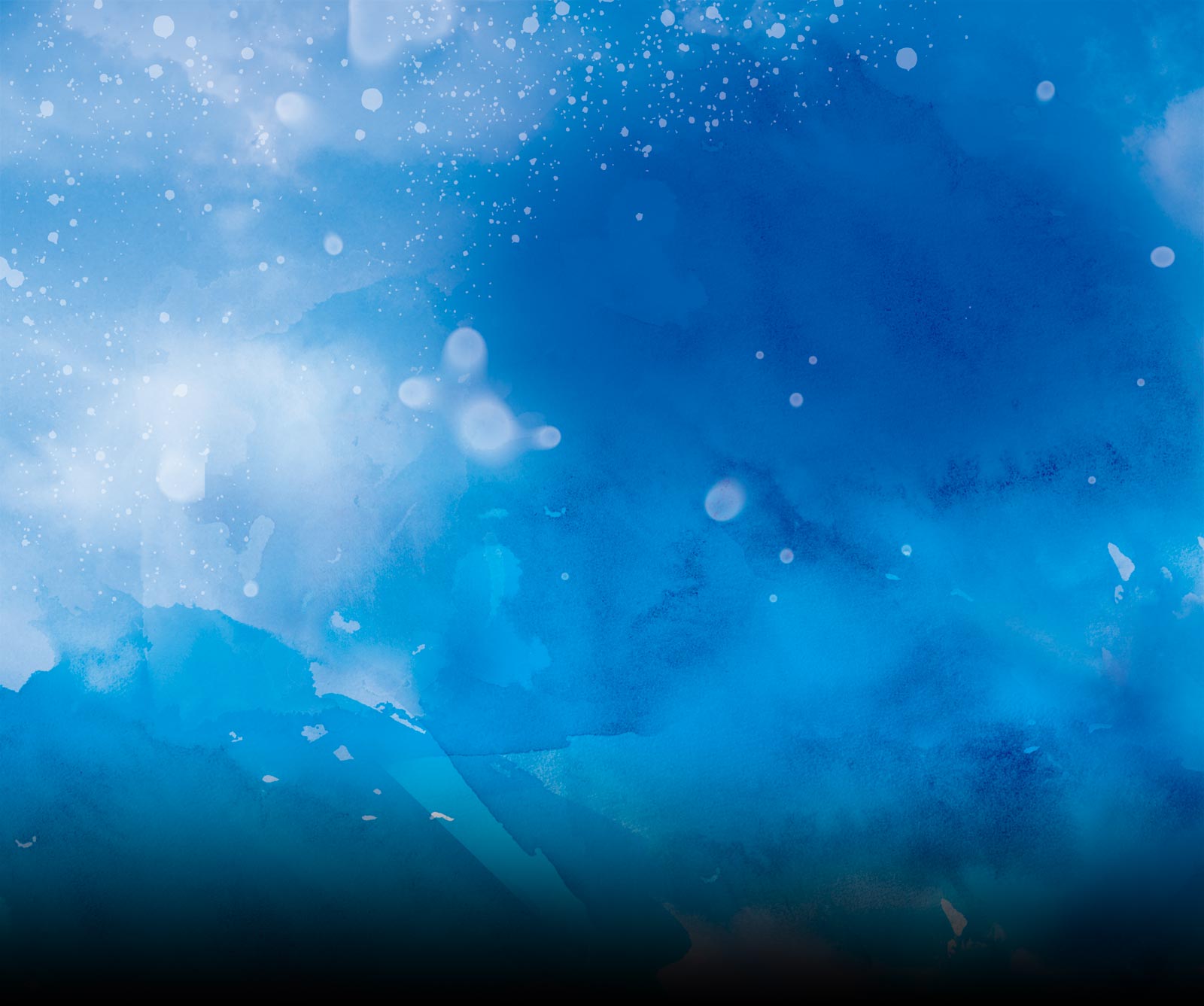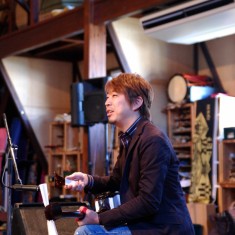Master of the Tsugaru Shimisen, Hiromitsu Agatsuma shared the stage with Kodo for the first time at last year’s EC. Visiting Sado in April for rehearsals designed to take this year’s collaborations to new heights, Agatsuma spared some time to speak with us about the new songs he plans to debut at EC 2013 and the art of expressing Japanese sounds and rhythms.
Working Towards a Balanced and Profound Collaboration
── What was it like collaborating with Kodo last year
I had been wanting to play with Kodo for a quite a while, but Kodo has such a long history and well developed style that I thought it might be hard for an outsider to step in. One-on-one collaborations can be quite free and easy to manage, but much of Kodo’s repertoire consists of large orchestral pieces. Through communal living, Kodo players enjoy an intimacy and united style that few groups have, so I felt a bit intimidated going in there on my own from the outside. However, last year I was given this unique opportunity and I slowly became used to the Kodo style of making music.
At last year’s EC, I was very impressed by the power of this Japanese group which sends out its message and music from Sado Island to the world. As a Japanese person and player of Japanese musical instruments, I feel a strong desire to share the unique qualities and wonder of Japanese music with the world. I hope this year we can go deeper with the collaboration, incorporating more of my own compositions, and create new music together.
Kodo’s artistic director, Mr. Tamasaburo Bando, suggested that one collaboration is not enough to truly understand each other, and that both Kodo and I could benefit from spending more time together and creating something more significant. So, here I am, joining Earth Celebration two years in a row.
── Until now, Shiroyama Concerts have been once-in-a-lifetime encounters of Kodo with guest musicians. Should we expect a much more integrated collaborative performance as this is the second year in a row
That will take a long time to accomplish, and both parties need to have strong desire to do this. Kodo has engaged in many collaborations, and have I played the shamisen together with musicians of various genres. In a collaboration, one side tends to end up leaning on the other. Kodo players adjust themselves to play with guest players and vice versa. To meet at the center and bring the best out of both sides is very difficult, especially in a short time, right after an initial meeting.
However, if we have a music score, like in western music, it is easier for each side to bring their own interpretation and meet somewhere in the middle. With this score, Kodo can continue to play the same piece in the future, even after the current players are replaced by newcomers. This cultivates versatility in the players, and they may develop a taste for improvisational work.
So this year, we are working hard to go one or two steps further in our collaborative work.
Japanese Sounds and Rhythm: Tradition and Innovation
── We heard that you’ve brought an original three-movement composition that will debut at EC this year. Can you tell us about the vision you have for these songs
My musical background is rooted in Tsugaru folk songs. One of these songs is called “Aiya-bushi.” Sado is home to a similar song called “Okesa-bushi,” and both songs find their origin in the “Haiya-bushi” from Kyushu. The song spread from south to north through kitamae-bune (northern-bound ships) that made their way up Japan’s western seaboard. My idea is to travel the other way around, from north to south, from Tsugaru to the roots. I thought I could make music with Kodo using unique rhythms and the essence of this song as an underlying motif. Many foreigners come to see EC, so I’m going to adapt a more classical music format. The song will have the structure of classical music combined with rhythms and melodies unique to Japanese folk songs.
I love the special groove I find in Japanese folk songs including the Haiya-bushi. I think it has a global appeal and can be intriguing for a foreign audience. I’m Japanese and grew up in Japan, so I find great meaning in pursuing music that can only be articulated by Japanese musical instruments. Irregular beats, airy pauses, rhythms and melodies that make listeners think, “wow, I like Japan” without knowing why… This is the kind of music unique to Japan I hope to create with Kodo.
── We are very honored to hear that you find Kodo to be an attractive partner in this way.
Kodo has a pillar the taiko. They’ve performed in Japan and around the world for decades. Throughout the years, many players come and go, but the group persists. Over the years a certain style has been established. All groups go through difficult periods trying to evolve. Being too strict about Japanese tradition is not fun; there needs to be some playfulness in this process. But being too liberal is unlike Kodo. By constantly undertaking new challenges, Kodo will pass on its traditional style and keep playing for many years to come.
I play shamisen constantly pondering both tradition and evolution. Many choose to strictly pursue tradition and go deeper down this road, but I won’t be defeated by them. I want to be pertinent to the present day and create modern shamisen music. I want to make new music that will be admired even by conservative musicians.
I hope this collaboration has a positive influence on both parties. If Kodo feels the same way, I’d love to play with them in various situations and locations. That is my dream.
Writing, photos and production by Junko Susaki


